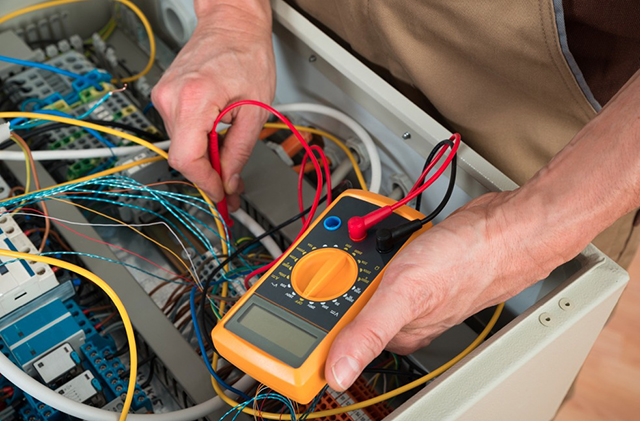Taking Safe Shortcuts
When it comes to minor electrical upgrades and remodeling projects, less is often more you can really on those in emergency 24 hour electricians Melbourne. That is, the less you can mess with the existing fixtures and wiring, the better. If something is unsafe or improperly wired, of course, you should replace it. But if you just need to add a light here, an outlet there, it can pay to look for ways to streamline the process. The following tips can help.
Need a Receptacle? Look on Other Side of the Wall
We tend to think room by room, forgetting that an interior wall is nothing more than some framing and two layers of drywall (or plaster). Electrical wiring runs inside the walls and can be accessed from either side. So if you need to add an outlet (receptacle) to a room that has no nearby outlets, check the opposite side of the wall. If there’s an outlet (or a light switch) close by, you can cut a hole in the wall behind the outlet box to tap into the circuit. Just be sure you know what circuit you’re tapping into, and don’t exceed its safe load limit by adding a new outlet.
Move Ceiling Lights without Running More Wire
Sometimes ceiling lights aren’t where you want them to be. But you may find that you can move a ceiling light surprisingly far without adding more wire or running a new circuit. The electrical runs in your attic often have some room for movement. You can increase this by removing a few of the staples that secure the electrical cable to the framing. Be sure to re-fasten the cable with staples after you’ve moved the fixture.
Take a Homeowner’s Electrical Exam and Save Money
Amateur, non-permitted electrical work in residences isn’t uncommon. For small jobs, like adding an outlet, it’s likely that you don’t even need a permit to do the work. However, for more major electrical work, like adding new circuits or installing a subpanel, you most certainly will need a permit. And permits usually mean working with a licensed electrician.
However, in some areas, homeowners can legally do their own electrical work and get fully permitted and approved. The bar to this is a homeowner’s electrical exam. It’s not standard everywhere but is growing in use. A homeowner studies up for the test and pays a nominal fee. They then take a test consisting of 10 to 20 questions, usually at the permitting office. If you’re qualified to do the work yourself, you’ll save the cost of hiring a pro. If you’re not qualified, use an electrician.
Open Up Closed Boxes to Add New Fixtures
These are easy to miss: electrical boxes that are covered up and often painted over. They are such a part of the landscape of our lives that we barely notice them. But they usually have live power in them: that’s the reason for the cover. Know more boxes that contain wiring must have a cover that encloses the box and remains accessible. Remove the cover and test the wiring for voltage with a non-contact voltage tester. These detect voltage through wire insulation, so you don’t have to risk touching any bare wire ends.
Use “Old Work” Electrical Boxes as Needed
Old work boxes, also called remodel or cut-in boxes, are designed to be installed after the wall or ceiling drywall is in place. They have flip-up ears or bending tabs that snug up to the backside of the drywall to secure the box. You simply cut a hole that’s a close fit for the box, insert the electrical cable into the box, slip the box into the hole, and tighten the screws to pull the ears or tabs tight to the drywall. This saves you the trouble of cutting out a large hole in the wall or ceiling to install a standard box against the framing.
